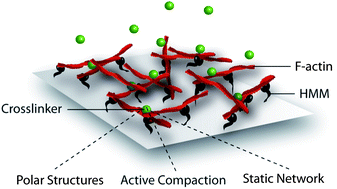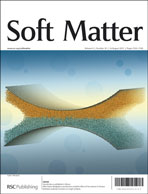Crosslinking proteins modulate the self-organization of driven systems†
Abstract
The inherent activity of the cellular cytoskeleton is responsible for its unique properties – but at the same time impedes its thorough understanding. It is extremely challenging to predict to what extent the specific properties of its constituents affect the overall dynamic properties. By using high density motility assays, we show that the interplay of only three components – molecular motors, filamentous actin and crosslinking


 Please wait while we load your content...
Please wait while we load your content...